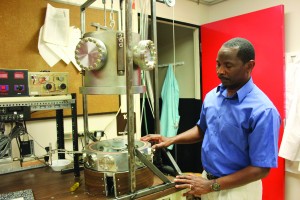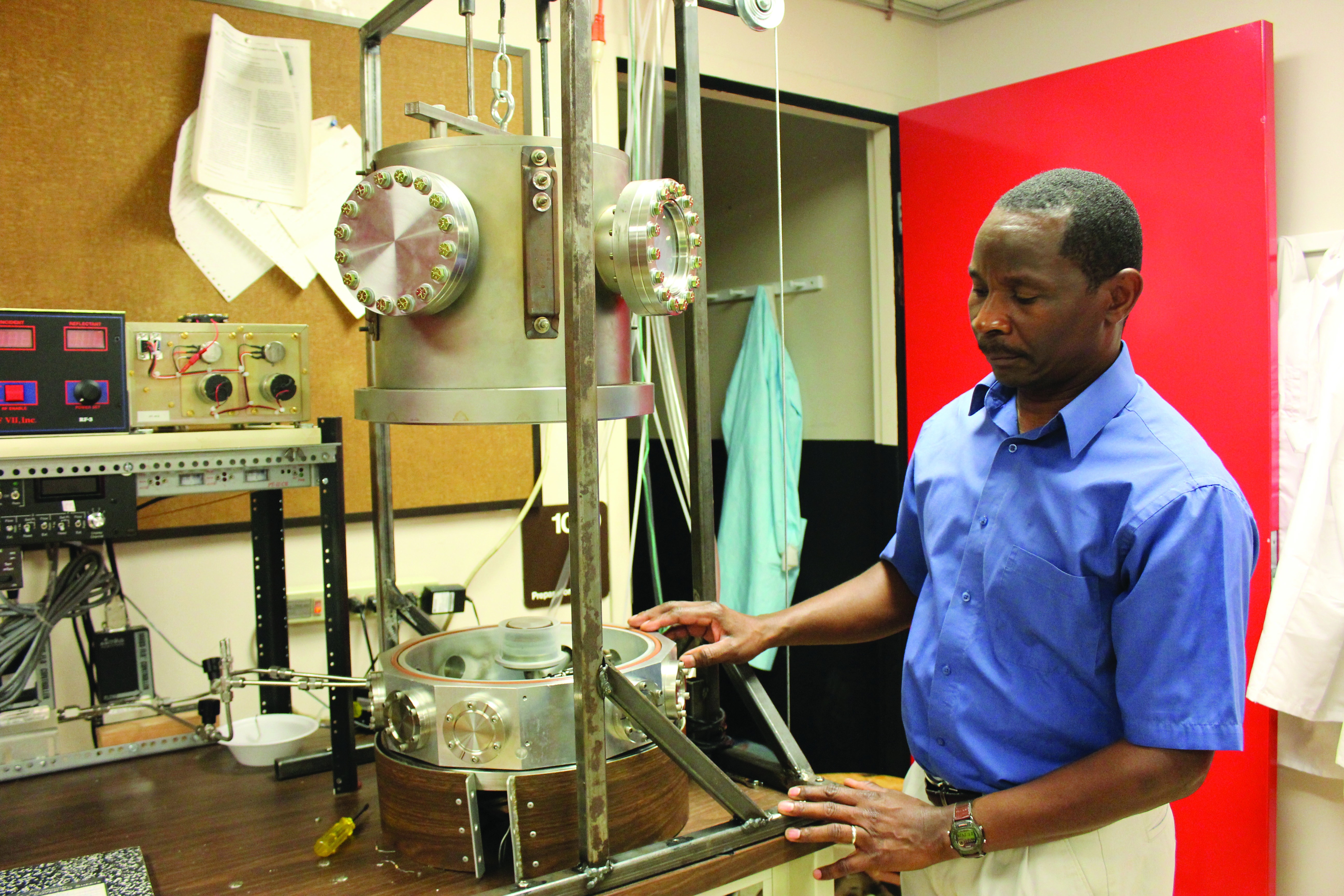
On Aug. 15, the National Science Foundation awarded the Youngstown State University College of Science Technology, Engineering and Mathematics two equipment grants — led by two STEM professors — both of which will help progress the future research materials of faculty and students.
The first grant, totaling $307,422, was a collaborative effort led by Tom Oder, professor in the department of physics and astronomy. The co-principal investigators include Pedro Cortes, assistant professor of civil and environmental engineering; Ruigang Wang, assistant professor of materials chemistry; Virgil Solomon, assistant professor of chemistry and mechanical engineering; and Klaus-Markus Peters, director of engineering at Fireline Tcon Incorporated, a nonmetallic mineral statuary in Youngstown.
Oder said this grant will be used to purchase an advanced plasma etching device. The device works by inserting a material and using plasma — charged particles that react chemically with material — to remove layers from the material and study the inside of it.
“To etch is to remove. It’s kind of like an artist using a chisel to sculpt art,” Oder said. “You have a big piece of material and then you want to remove part of it so that you end up with some design. So in this sense, the design is the device. So you’re subtracting material to enter with the design.”
The second grant, led by Wang, was $200,640 and will be used to gather further research in improving catalytic conversion systems in cars. These systems are used to convert harmful pollutants from an engine’s exhaust into cleaner emissions.
YSU’s STEM College has been successful at getting three of these Major Research Instrumentation grants for three consecutive years, which is something Oder sees as a source of pride.
“It’s a big honor. It is a very competitive grant. It’s a nationwide competition, and in a particular year, you may have thousands of faculty and even industries competing for that part of the money. Not everybody gets it. We’ve got it three times in a row. It’s based on the quality of the proposal. So that tells you the quality of the proposal is really that great,” Oder said.
Cortes said that he wants to use carbon nanotube field-effect transistor structures in the new plasma etching device to detect toxic substances, drugs or explosives in these materials.
“These CNTs-FET structures will serve as the sensing platform for detecting bio-chemical agents, such as explosives, toxic substances and drugs. The development and incorporation of unique electrical platforms [FETs] on nanosensing devices is a critical element for tuning the detection sensitivity of CNTs. These exclusive electrical platforms can be precisely manufactured using an etching plasma system. This is the reason for my participation in this grant,” Cortes said.
Wang explained his part in the research aspect of the grant, and said he wanted to use the device to change the surface structure of catalysts — which are substances that speed up chemical reactions.
“One of our current research areas is in metal oxide catalysts,” Wang said. “Our preliminary results showed that the plasma etching treatment could modify the surface structure of catalysts, which allows us to tune the catalytic activity of materials.”
Solomon explained that his part in the pursuit of the grant was to use the plasma etching device to use shape memory alloys — metals that remember their original shape — to produce micro-electrical mechanical systems. The results will further his research at YSU.
“I am planning to use the instrument for my research. Besides, the instrument will enhance YSU’s materials research capabilities. I am actively involved in the YSU’s PhD program in materials science and engineering, and I support any step we take toward the program’s development,” Solomon said. “We’ve done well, so far. The program was accredited two years ago; we have new doctoral students, and new facilities like the electron microscopy, x-ray diffraction, additive manufacturing and more.”
Cortes said that he is satisfied with the progress that he and his colleagues have achieved in the pursuit of the grant.
“We have created an excellent synergistic collaboration in order to succeed in this grant,” Cortes said. “I am very happy with the progress achieved so far.”
Oder said that the grant allows anyone that is willing to enhance their research.
“It’s a big deal for us because it makes us able to do a lot of things that we couldn’t before as far as research is concerned. It now gives us the capability to do research at a level that we have not been able to do before,” Oder said. “We can make a minute device, microelectronics, nanoelectronics and it’s really going to boost our [students and faculty] research efforts and our ability to study materials.”
